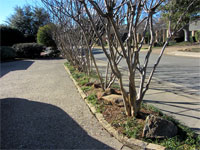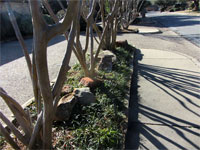Question and Answer – March 2013
Since this is a visual publication, Neil requires a photo for each question we post here. He chooses those six or eight questions of widest reader interest, and that’s why plant ID questions don’t often make the cut. But most other questions are fair game. This month, we have some really interesting ones. If you’d like your question to appear here next time around, send it and your photo to Neil today.
Question: I hope you can solve this mystery. These webs are most visible early in the mornings. They are a heavy, thick mass, but I have seen no insects near them. They’re in both the St. Augustine and the wild areas nearby. They all have one hole in the web. Do I need to worry? J.J., Parker County.
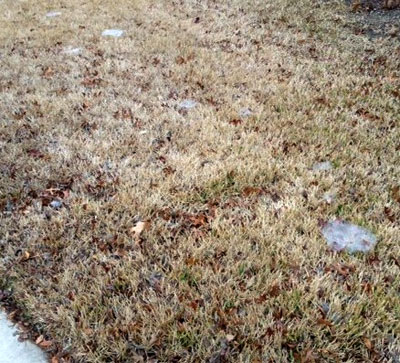
Answer: These are grass spiders, and they are beneficial. The webs are more noticeable in the morning because that’s when dew and frost are most likely, and when the low angle of sunlight adds to their brilliance. Just ignore them, and they (and many of your insects) will eventually go away.
Question: We have a terrible problem with this broadleafed weed that I call "wild strawberries." They grow all year long, and no pre-emergent weedkillers touch them. What can we use to eliminate them? B.D., Tyler.
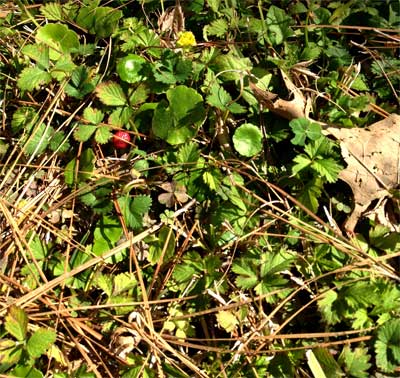
Answer: A lot of us were initially sold (yes, sold!) this plant as Duchesnea, or "mock" strawberry. We planted it and watched it thrive in our groundcover beds. And then…. And then…. It’s really invasive, and the fruit is not especially tasty. In fact, it’s not tasty at all! I note in your photo that you also have dollar weed, another perennial weed in Texas lawns. Both of these invaders can be controlled with a broadleafed weedkiller spray (containing 2,4-D). Follow label directions carefully for best results. It might help if you added just one drop of liquid dishwashing detergent per gallon of spray to help hold the herbicide on the funnel-shaped leaves of the mock strawberry and the extremely glossy leaves of the dollar weed.
Question: I have a very large and old post oak that has done quite well since we built our house 18 years ago. Last spring and summer, the tree leafed out and grew well, but we have found a large "hole" about 20 feet up, where a woodpecker pecked out a spot for a nest. The hole is empty of woodpeckers now. Should I fill the hole, or will he just come back and peck another hole? What can I do before spring? D.F., Colleyville.
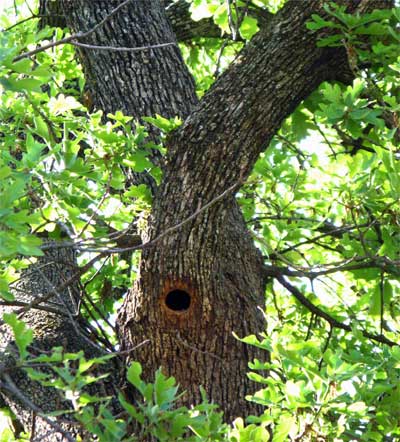
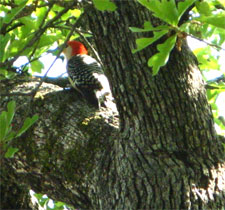
Answer: Great photos, and the perfect example of damage done as this bird nests. I had my own thoughts, but the folks at Arborilogical Services of the DFW area (my advertisers, and the people who care for all of my own trees) are far better, so I forwarded this question on for their suggestions. Here is what I received back from their certified arborist Bill Seaman (Thanks, Bill):
" Woodpeckers are nature’s masters at finding branches with cavities or heartwood rot. I suspect it is a result of tapping on wood all day long. Woodpecker nests in limbs of post oaks may be more common than one would think. Their rotted heartwood is very soft and pithy, making it easy to chisel and remove. Post oak, as a species, is very efficient at compartmentalizing rotting tissue and restricting its spread. Additionally the tree’s sapwood, the tissue between the bark and the heartwood, is very strong. When woodpeckers are able to chisel an opening through the sapwood and carve out enough rotted heartwood to accommodate a nest, they have a solid home that can last for years. There is no need to fill the cavity. It is unlikely that the nest is compromising the structural integrity of the tree or affected branch; but it never hurts to have a certified arborist assess this specific situation and monitor it as part of the tree’s ongoing care."
Question: Do you have any tips for care for this odd plant? The flowers smell so bad when it’s blooming that I have to set it out in the backyard. Then, I notice that flies are attracted to its smell of rotting flesh. How should I take care of it? E.H., no city given.
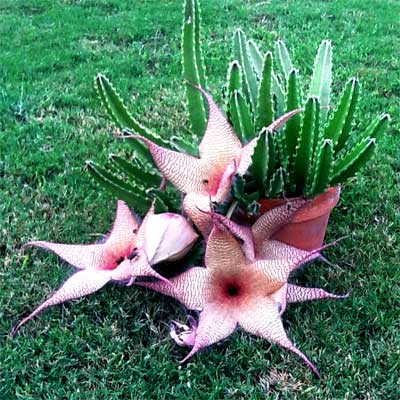
Answer: This is one of my all-time favorite plants. Stapelia gigantea, or giant hairy starfish flower. As you hinted, it’s also called carrionflower, because its flowers are actually pollinated by the flies. Stapelias and their cousins Huernias, among others, are native to South Africa, and they thrive in hot, dry conditions. This plant is tropical, so don’t set it out when there is any chance of freezing weather. It also needs perfectly draining soils. I’ve grown as many as 30 or 40 different species of these, and the only problem I ever saw were the omnipresent mealybugs that thrive on cacti and succulents. Buy yourself some nose plugs, and love your plant!
Question: I have been told to cut the dead limbs out of my juniper and that it would survive. What do you think? C.E., no city given.
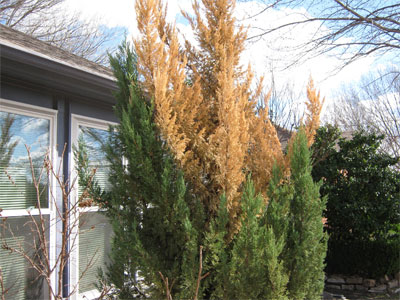
Answer: You can certainly try it, but it has never worked for me. My beloved Spartan juniper at my office became so misshapen that I finally took it out. Several dozen Blue Point junipers that I see each week have varying degrees of this infection, and trimming has not stopped it. I have done a lot of research, and it does not appear to be a disease for which fungicides are going to offer much help. I am so sorry for this message. Before you remove the plant, you might want to send tissue samples of the interface where live branches turn into dead tissues to the Plant Disease Diagnostic Laboratory at Texas A&M. They could culture it and offer possible suggestions.
Question: We are going to remove the liriope in this berm because it has crown rot. We were going to replace it with Asian jasmine, but wondered if there were a groundcover or low, decorative grass that would require less maintenance. The berm is surrounded by concrete, and it gets extremely hot in the summer. Water tends to run off toward the sidewalk, so there are bare areas where the liriope never thrived. Suggestions? D.D., Dallas.
Answer: I recognize this question and your first name from my radio program this past weekend. It’s great to have the photos to help fine-tune my response. I am just not a fan of ornamental grasses in uses like this. They are brown so much of year that they just wear me out visually. Your thought about using Asian jasmine is a good one, and the purple wintercreeper euonymus I suggested Sunday would also be lovely. In fact, even though it would require just a little sculpting and trimming (line trimmer) two or three times each season, that’s a tiny price to pay for such great rewards. My suggestion of Tam junipers would have been great if the bed were just a bit wider. However, where you can trim wintercreeper easily, Tam junipers would require a lot more hand trimming, so I probably wouldn’t use them were this my bed. Honestly, after the wintercreeper and jasmine options, my third choice might be a mid-sized selection of rosemary. You might lose it in extremely cold winter weather, but it would be pretty until then. It wouldn’t cost too much to replace it. It’s a good third choice.


